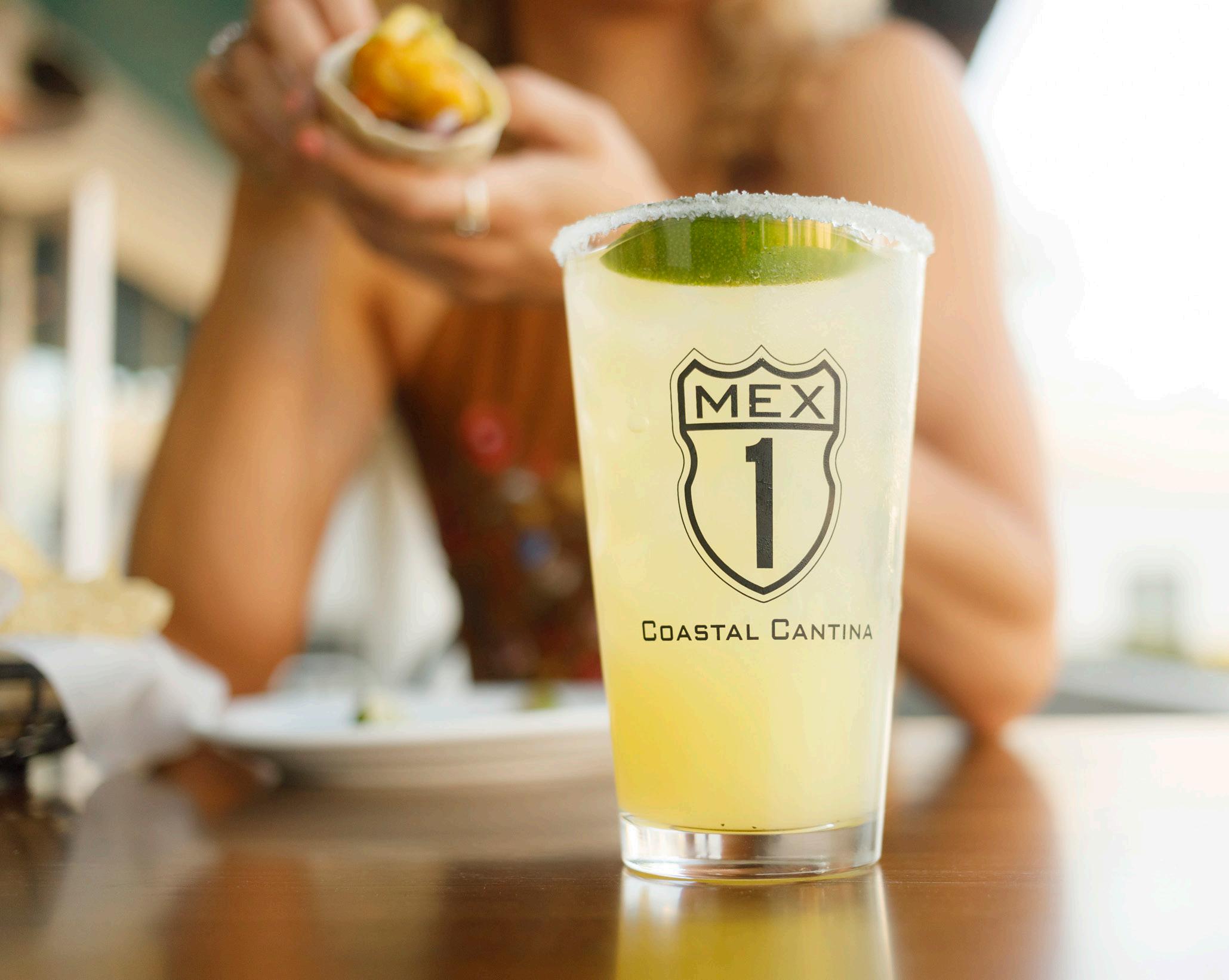COOPER RIVER BRIDGE RUN

‘THE
TIPS FOR HAPPY FEET
WIND IN HER FACE’
RACERS FOR PACERS HELPS TO KICK OFF THE BRIDGE RUN

THE BRIDGE RUN’S HISTORY



‘THE
RACERS FOR PACERS HELPS TO KICK OFF THE BRIDGE RUN

THE BRIDGE RUN’S HISTORY

Welcome to the 47th annual Cooper River Bridge Run. Our community thrives on the new challenges and opportunities that keep our race fresh and exciting. These innovations are why our race has lasted through generations and contributed in so many ways to the economy and well-being of the Lowcountry and state of South Carolina. The Bridge Run’s commitment to promote a healthy lifestyle through nutrition and exercise is a goal to which we will forever aspire. We look to the youth of our community to help us perpetuate this worthy endeavor so that it remains a solid foundation for a healthy tomorrow.
Many of you have witnessed the growth from 700 to 40,000 participants, and we couldn’t have done it without you. We’re in this together!
We kickoff our event with the ever-growing Health and Wellness EXPO on April 4 and April 5 at the Charleston Area Convention Center in North Charleston. Our Health and Wellness Expo has more than 200 vendors with cutting-edge fitness attire, exercise equipment and demonstrations, nutritional information and product sampling.
The Cooper River Bridge Run begins at 8 a.m. April 6. Our spectacular harbor views and beautiful architecture will amaze and inspire you while crossing the bridge from Mount Pleasant to Charleston. We have one of the only races in the country that provides free transportation (250 buses) before and after the race for any participant wearing their race bib. Cross the finish line and receive a Finisher Medal and then enjoy our Finish Festival in Marion Square, the heart of beautiful historic downtown Charleston.
We are very honored to have Harris Teeter as our presenting sponsor. Our heartfelt thanks go out to all our wonderful sponsors and vendors for their continued support.
We couldn’t begin to have this event without the tremendous job done by our volunteers, local police and our community partners. Above all, our board of directors and staff thanks the people of our wonderful community who are the heart and soul of the Cooper River Bridge Run.
Let’s get over it!

May 2:30-5:30pm
Irv Batten, Race Director

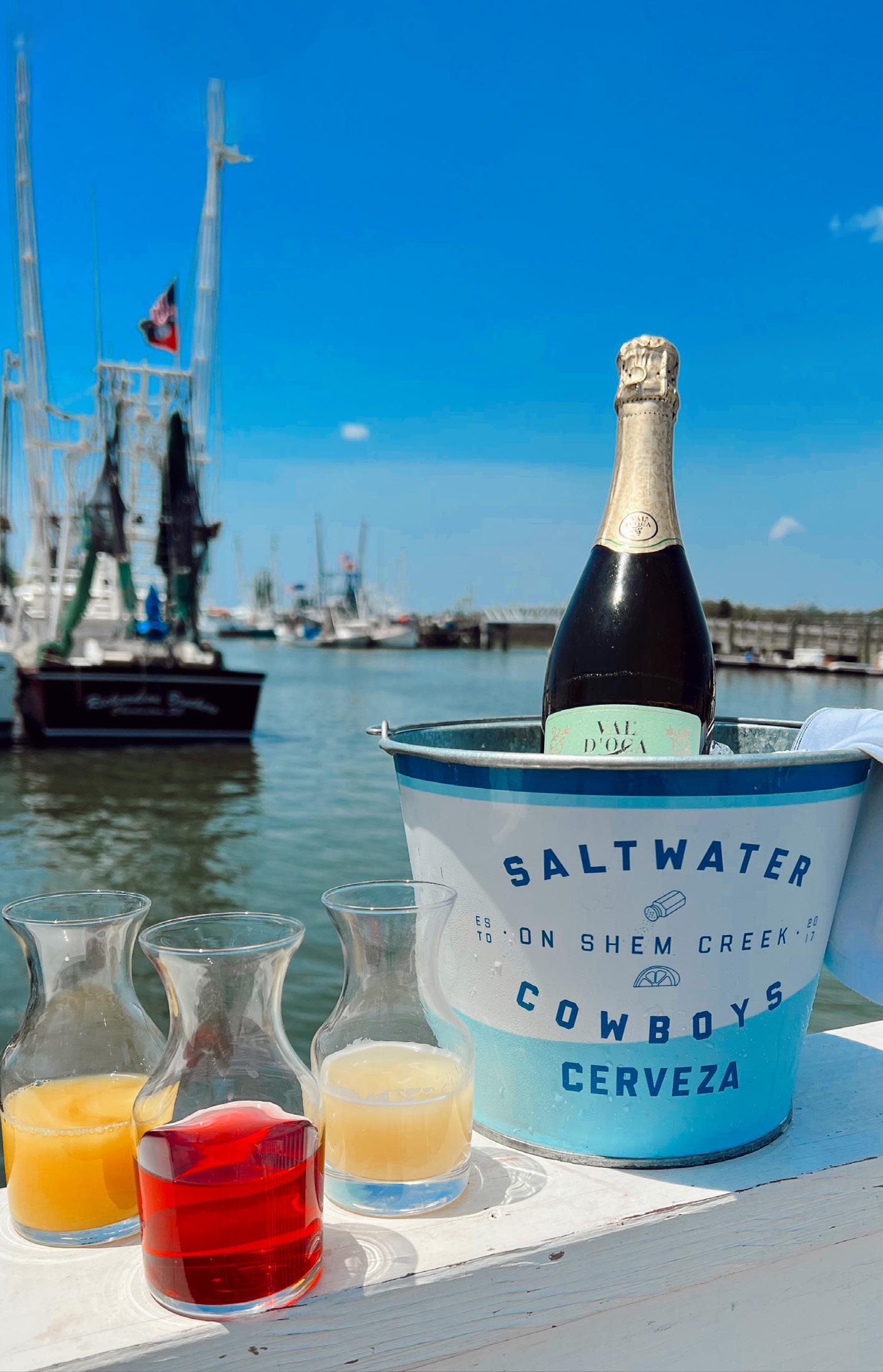





















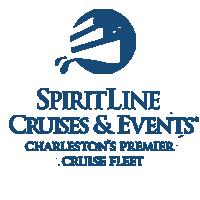







































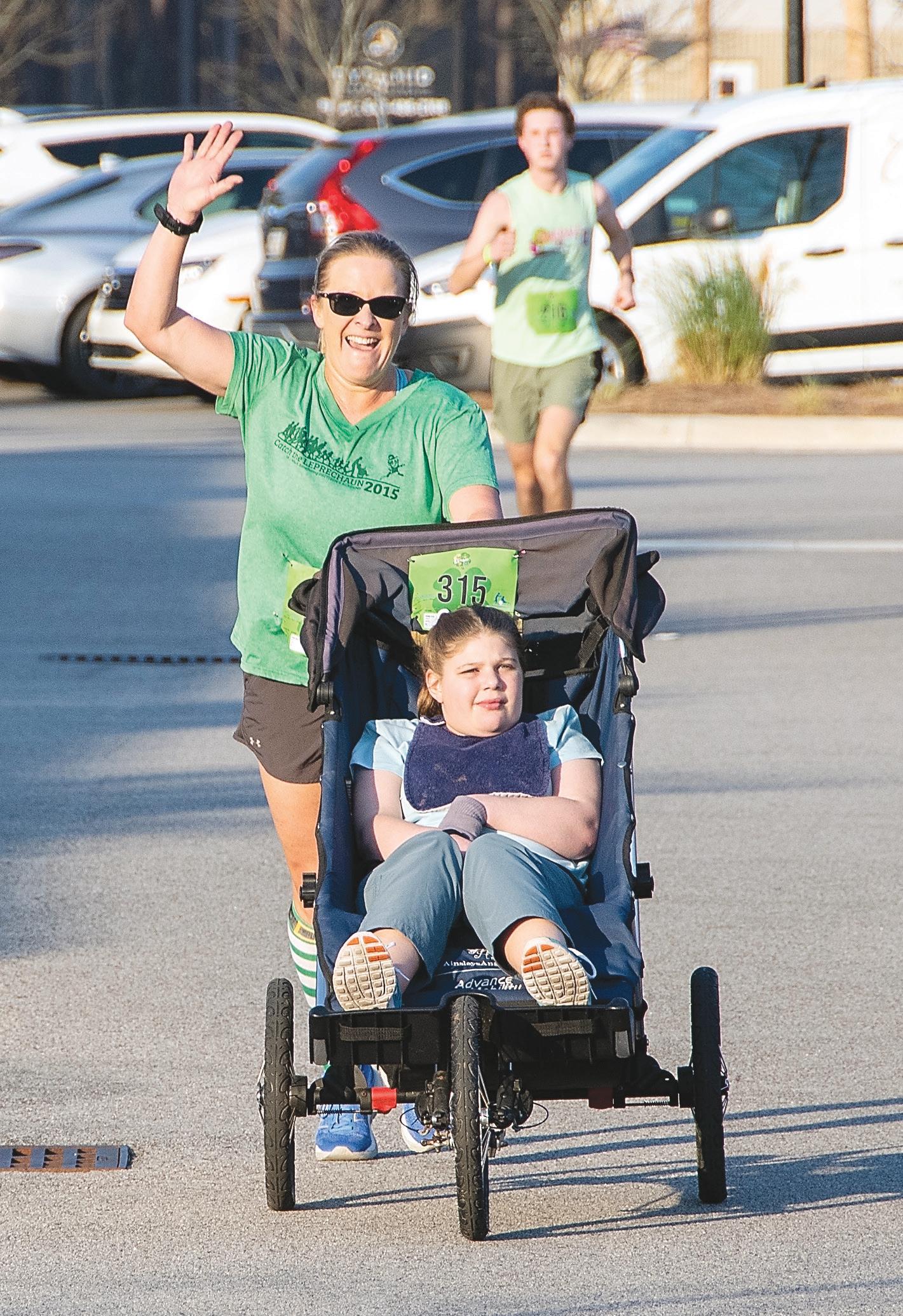
As a girl, Katherine Holladay of North Charleston loved riding horses. It was a way to be outside and to feel free in all of nature’s beauty, her parents recall.
“She really loved riding horses,” John Moore remembers. But it wasn’t too long before the disabilities-focused school that she attended could no longer offer horse rides due to liability issues. That was the end of breezy rides in the distinct saddle for Katherine, a non-verbal child with epilepsy and other special needs.
Soon when she was 7 came along another option — being pushed in an adaptive wheelchair by runners like Sean Glassberg of Mount Pleasant. He went on to start Racers for Pacers, a small nonprofit to let children — and adults like Katherine, who is now 21 — thrill to the mix of speed, wind, sunshine and the rhythmic pounding of the feet of a runner pushing a rolling chair.
 Glassberg
Glassberg
“This got her back with the wind in her face,” Moore wistfully said, happy that Katherine participates in a handful of 5K and 10K races every year. “It gives her something to do. She doesn’t walk. She doesn’t talk. She doesn’t have anything else other than what we do with her. This gets her out with her friends.”
Her mother, Lynn Moore, agreed. “I’m glad we have it. It’s good for her.” Later she added that the others being pushed in races like the Cooper River Bridge Run are friends.
“It’s kind of a small family.”
“It’s just a privilege to give back a small piece of that to someone who otherwise wouldn’t be able to take part.”
—Michele Milner
This year’s Bridge Run — the 47th — expects to accommodate more than 30,000 runners from all over the place, said Bridge Director Irv Batten.
Rain or shine, the April 6 race will start in Mount Pleasant and send runners across the Arthur Ravenel Jr. Bridge. It’s a grueling 4.8% grade going up, but much easier going down, especially if you’re pushing a 120pound adult and a chair that weighs about 10 pounds, says Roper St. Francis nurse Michele Milner, who has pushed Katherine in recent races, including the March Catch the Leprechaun 5K that helps to raise money for Racers for Pacers.
“The chair definitely does add another challenge,” Milner said. “At times, you have some technical issues with the chairs if they’re not pushing straight. If it’s flat, it’s not too hard, but uphill can be pretty challenging.”
Milner, who has been running competitively since middle school in Aiken, said she enjoys pushing Katherine because it’s a way to give back to the community for a sport

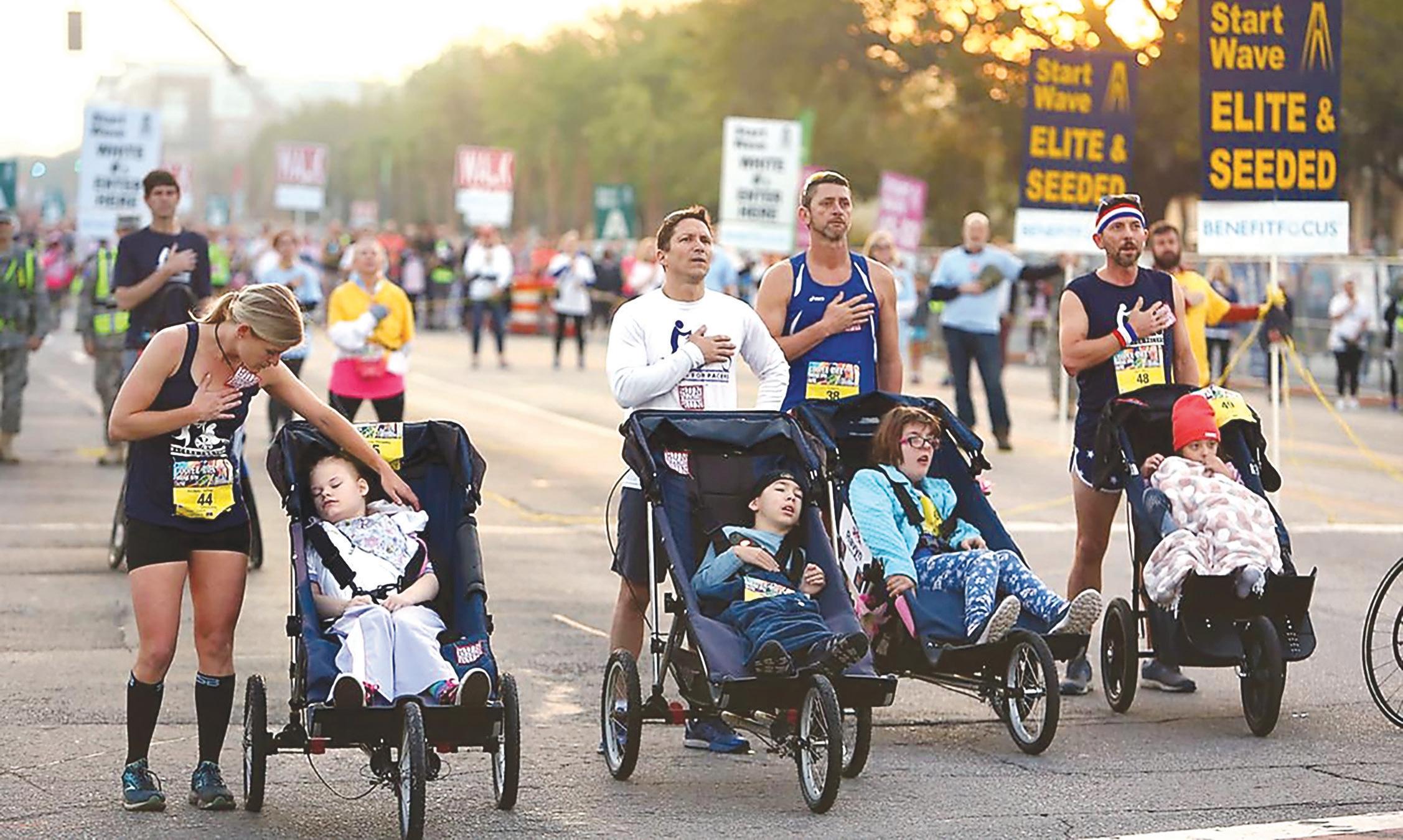
that has given her so much.
“Katherine is nonverbal but she has her own way of communicating,” Milner said. “She definitely lets me know if she’s having a good time. She makes her happy noises and claps her hands. The louder the crowd around her the happier she is.
“It’s just a privilege to give back a small piece of that to someone who otherwise wouldn’t be able to take part.”
The Bridge Run, which touts itself as “the best organized and best conducted 10K race in the world”, has a huge fiscal impact every year. It pumps about $33 million into the local economy over Bridge Run weekend as visitors pack hotels and flock to local restaurants and beer halls. It also generates thousands of dollars annually to charities and runners pump their legs to “Get over it,” meaning the bridge.
Runners start streaming into town on April 4 to pick up their race day packets and Bridge Run T-shirts at the Health and Wellness Expo at the Charleston Area Convention Center. They also can get free food and drinks and purchase all sorts of running gear at the 200 vendor tents in the facility.
On race day, wheelchair participants and the Racers for Pacers will start at 7:25 a.m. — 35 minutes before waves of runners cross the starting line.
For wheelchair participants to be able to push themselves or be pushed by someone

“ There were a lot of people who were cheering us on. It happens all of the time. The running community is so happy and just good people.”
—Sean Glassberg
like Milner, they have to show they can get over the bridge within about 30 minutes and finish in about an hour.
“They are vetted or seeded,” Batten said. “You have to be able to complete the 10K course or you’re not in the group,” he said, adding that race officials didn’t want any safety issues if the first wave of runners caught up with the wheelchair participants. “It’s worked well so far.”
All participants then head to the Finish
Festival in Marion Square where they suck down water and inhale bananas and oranges from mounds of fruit provided by the race’s premier sponsor, Harris Teeter. Then amidst the sweat, exhaustion and exhilaration, there’s music, dancing and lots of smiles all around.
Glassberg remembers first pushing Katherine in the 2011 Bridge Run.
“She was number one,” he said. “We just got in there [in the middle of the crowd] and ran.”
He also remembers getting pretty tired in that first race with Katherine, who was then 9.
“The physical aspect was definitely a workout, but you expect that when you’re pushing someone up a hill,” said Glassberg, an educator who has two degrees from Clemson. “There were a lot of people who were cheering us on. It happens all of the time. The running community is so happy and just good people.”
BridgeRun.com
1978
• The Cooper River Bridge Run is founded by Dr. Marcus Newberry.
• 766 finishers ran over the Silas Pearman Bridge.
1980
• The race course was rerouted over the John P. Grace Memorial Bridge.
• The Dewey Wise Trophy is established (oldest finisher who runs a time faster than their age in minutes).
1981
• First and only local overall winner, Mark Embler, finishes in 30:54.
1984
• First two-time winner, David Branch.
1985
• Prize money is awarded for the first time.
• The race course is certified.
1986
• The Marcus Newberry Award is established (the first male and female finisher from the Charleston Tri-county area).
• Race delayed one hour due to dense fog and an automobile accident.
1992
• Elite runners from Kenya began a long winning streak.
1993
• The first winners of the T-shirt Design Contest, Caitlin McPhilips and Amy Stewart Reed.
1994
• Oprah Winfrey ran the Cooper River Bridge Run.
• Julian Smith hired as race director. (1994-2019)
1995
• Race course returned to Silas Pearman Bridge with more than 10,000 finishers.
1997
• First use of chip timing.
• Female course record, Elana Myers in 31:19.
• Actor Bill Murray fired the cannon for the start.
1998
• First two-time female overall winner, Elana Myers.
2000
• Male course record set by James Koskei in 27:40.
2002
• Started the Bridge Run Hall of Fame.
• Genie Wellons becomes first wheelchair athlete to compete in the Bridge Run.
2006
• Record number 45,663 registered runners/walkers (33,742 finishers).
• First time over the new Arthur Ravenel Jr. Bridge.
• Debut of the Elite Wheelchair Race.
• Runners required to be seeded according to their finish times.
2007
• Race capped at 40,000 participants.
2010
• First timing chips on race bibs.
• Second largest race in CRBR history with 38,413 registered/33,413 finishers.
2017
• 40th Anniversary celebrated with 40 Days of Bridge Run events.
2019
• CRBR awarded tghe Governor’s Cup Award (for impact on Tourism and Travel).
• Irv Batten officially becomes race director.
2020
• A Virtual Run replaced the regular race due to the Covid-19 pandemic.
2021
• The in-person race resumes on September 25 due to drop in Covid-19 cases.
• Hermin Garic sets a new course record (22:58) in the Elite Wheelchair Race.
• Overall Champion trophy named in honor of former Race Director Julian Smith.
2022
• Marks the 45th Anniversary of the Cooper River Bridge Run.
2023
• Overall Wheelchair trophy named in honor of “Genie” Wellons.
Thursday, April 4, noon to 8 p.m.
Friday, April 5, 8 a.m. to 8 p.m.
Charleston Area Convention Center
5001 Coliseum Drive
North Charleston
Saturday, April 6, 8 a.m. to noon
Marion Square, Charleston (Participants only)
We encourage you to post these dates to your calendar now so you can join us every spring for the Cooper River Bridge Run:
2025: April 5
2026: March 28
2027: April 3
2028: April 1
2029: April 7
2030: April 6
2031: April 5
2032: April 3
Anytime you need the latest information on the race, check out BridgeRun.com . Happy running!
CONTINUED FROM PAGE 7
After that 2011 race, Glassberg, a Mount Pleasant father of four, realized he needed to give back to the community — and that creating a nonprofit to help people like Katherine be outside in the wind was just the thing.
The mission of the group is to provide “running chairs for individuals with disabilities who cannot run on their own. We provide these individuals with the opportunity to ‘run’ with a pacer on a regular basis at least once or twice per week and in local 5Ks, 10Ks or longer competitive runs throughout the Lowcountry.”
Over the years, the way that Racers for Pacers participated in the Bridge Run has changed.
Glassberg said he quickly realized in 2011 that running with a long chair in the middle of a pack was kind of dangerous — for Katherine in the chair and for other runners. So they then started toward the end of the race. But even then, slower runners eventually caught up with the dozen members of the Racers for Pacers and it got dangerous all over again.
By around 2019, Batten put the Racers for Pacers group at the front, with the understanding that the group had to make it over the bridge and be off the course by the time the elite runners finished. And that kind of amped up the pressure and competitiveness of the runners pushing the chairs.
“It’s definitely fun,” Milner said. “People are very encouraging. It’s also fun when we have a whole group of Racers for Pacers.”
And it’s just plain worth it, Glassberg added.
“Some of the kids respond very, very happily,” he said. “They react to it and yell and cheer and it’s pretty neat. Parents always

say it relaxes them.
“It’s fulfilling for me just running with them and provides therapy for them,” he said. “Running allows those nerves to just relax. You go on a 5K or a 10K and their body is much more relaxed.”
• To learn more about Racers for Pacers, visit its website at RacersForPacers.org. More information on the Cooper River Bridge Run is online at BridgeRun.org.
Andy Brack is editor and publisher of the Charleston City Paper.

Racers for Pacers' Michele Milner pushes Katharine Holladay of North Charleston in a recent charity run in Mount Pleasant. In 2011, Holladay participated in the Bridge Run, inspiring the founding of the nonprofit. Photo by Ashley Stanol.
Leaders of the Cooper River Bridge run recognized male and female winners of the
race in a variety of categories, from overall and wheelchair champs to local winners and great volunteers.
Recognizing the tri-county area’s top male and female finishers by year.

2022
2023
NOTE: The Cooper River Bridge Run started the Marcus Newberry Award in its 10th year to honor the top local race finisher.
Recognizing a person for his or her unselfish dedication to promoting health and wellness across the Lowcountry. Past winners include:
Year Name
2015 Noah Moore
2016 Marka Rodgers and Adam Gorlitsky
2017 Susan Johnson and Janis Newton
2018 Bill Macchio and Cullen Murray-Kemp
2019 Dr. Janice D. Key
2020 Dr. Marcus Newberry
2022 Paul Wieters
2023 Tami Dennis
In 2022, the Bridge Run started a new award — the Cedric Jaggers Award — to serve as a tribute to the race’s longtime historian and author of Charleston’s Cooper River Bridge Run: A Complete History in Words and Photos (2011). The top male and female South Carolina finishers receive an award and a $500 cash prize.
Recognizing overall champions for the annual Cooper River Bridge Run.
1980
1995

2007
2010
2011
2012
2013 Simon Ndirangu
2014
2015
2016 Dominic Ondoro
2017
2018
2020
2023
Recognizing the oldest person running and finishing the Bridge Run.

Recognizing CRBR’s wheelchair champs by year.
2023
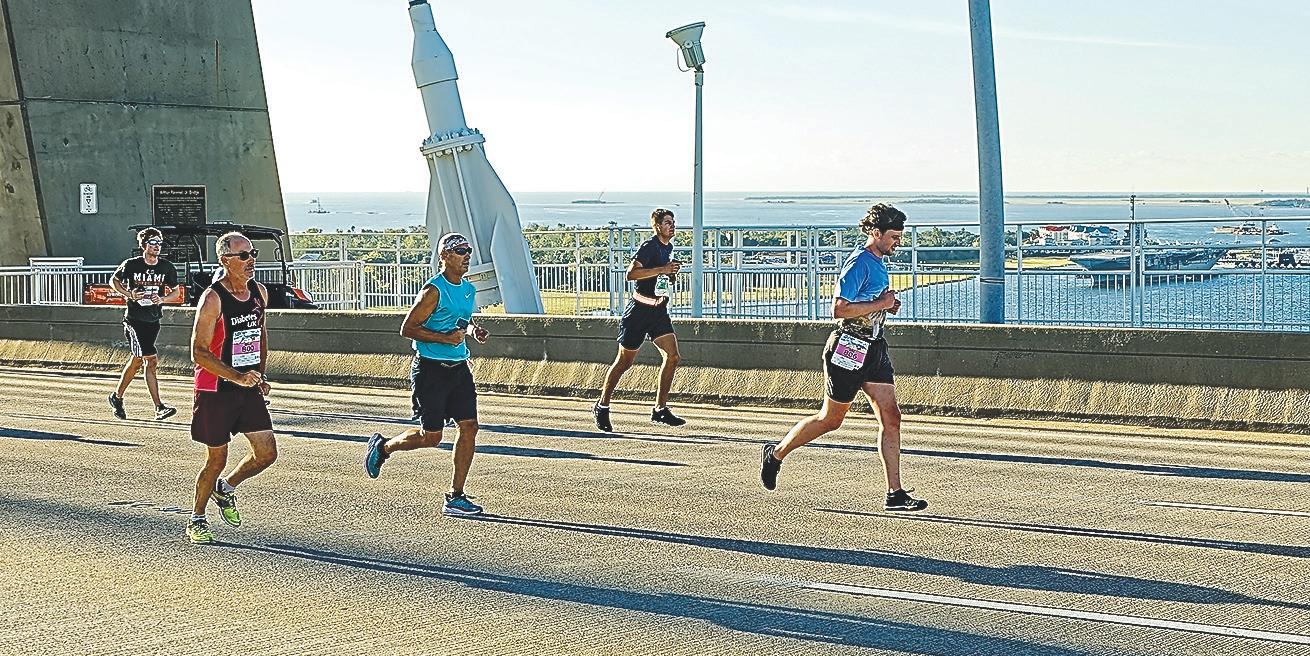
82,000
Bottles of water needed for the race.
190
Number of booths at the event’s Health and Wellness Expo, one of the largest in the U.S.
82
Percentage of runners with average household incomes of more than $50,000.
75
Percentage of runners who travel more than 60 miles to participate.
47
The Cooper River Bridge Run is 47 this year. It began in 1978.
32.9
Average participant’s age.
31.19:00
Women’s running record, held by Elana Meyer, 1997.
28:02:00
Women’s wheelchair record, held by Cheri Madsen, 2022.
27:40:00
Men’s running record, held by James Koskel, 2000.
22:34:00
Men’s wheelchair record, held by Hermin Garic, 2022. 19
The Arthur Ravenel Jr. Bridge (new Cooper River Bridge) opened 19 years ago on July 15, 2005.
4.8%


Number
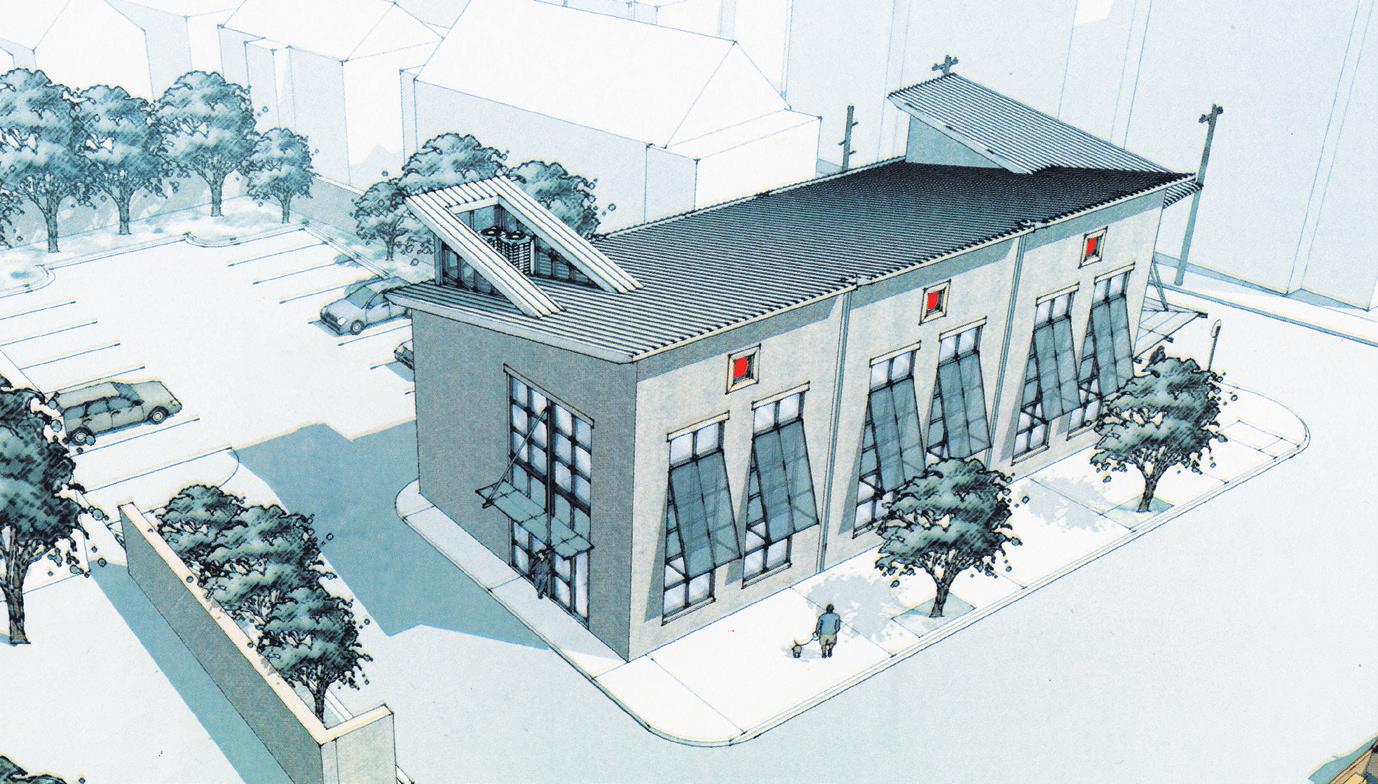
Your feet literally are the foundation for your running. To make sure you have healthy feet and legs, you need to take special care to make sure they stay happy. Here are some tips, courtesy of Amy Minkel, an owner of area Fleet Feet stores:
Make sure to get a professional to fit your feet for the correct-sized shoe, making sure that the shoe is appropriate for the activity you’re planning. “Foot shape, volume, length and width should be considered when choosing a shoe,” Minkel said. “The correct shoe should be comfortable right from the start and not need a ‘break-in’ period.”
The proper sock can help prevent issues such as blisters, hot spots and fungal infections, Mikel added. “A sock made from a technical, moisture-wicking fabric is key. Avoid cotton as it traps moisture against the skin and loses its shape as it takes on moisture.”
“Minkel said if you take care of your muscles before, during and after a run, they will take care of you. She encourages runners to do a proper warm-up prior to a run or walk to get leg and foot muscles ready. After the workout, make sure to stretch. “Using massage tools to keep your muscles loose can also help avoid injuries.”
Because muscles are about 79% water, drinking water daily will help keep them more pliable and resistant to injury. Minkel added that replacing electrolytes after workouts also helps people to absorb water properly.

Looking for some new places to log some miles as you train for your next race? Veteran runnints offer these scenic locations where you might see some new, cool sites and experience parts of the Lowcountry with which you’re not familiar:
Folly Beach
Running along the beach (be careful between the groins) can be uplifting, particularly along the “Edge of America.” Remember to be careful on narrow streets parallel to the beach.
West Ashley Greenway
This former railroad track from Albemarle Road near the Ashley River to Main Road in outer West Ashley has miles of flat, good paths on which to train. It’s better in winter months when the bug population is more limited.
Kiawah Island
You can start a great beach run at the south of the island from the county’s Kiawah Beachwalker Park. But remember: It’s a healthy drive from the peninsula.
James Island County Park
This convenient park offers a bunch of trails where you can see wildlife in this sprawling area just minutes from downtown Charleston.
Francis Marion National Forest
This area north of Mount Pleasant has a lot of great trails … and lots and lots and lots of bugs. But hey, run fast and you’ll be past them.
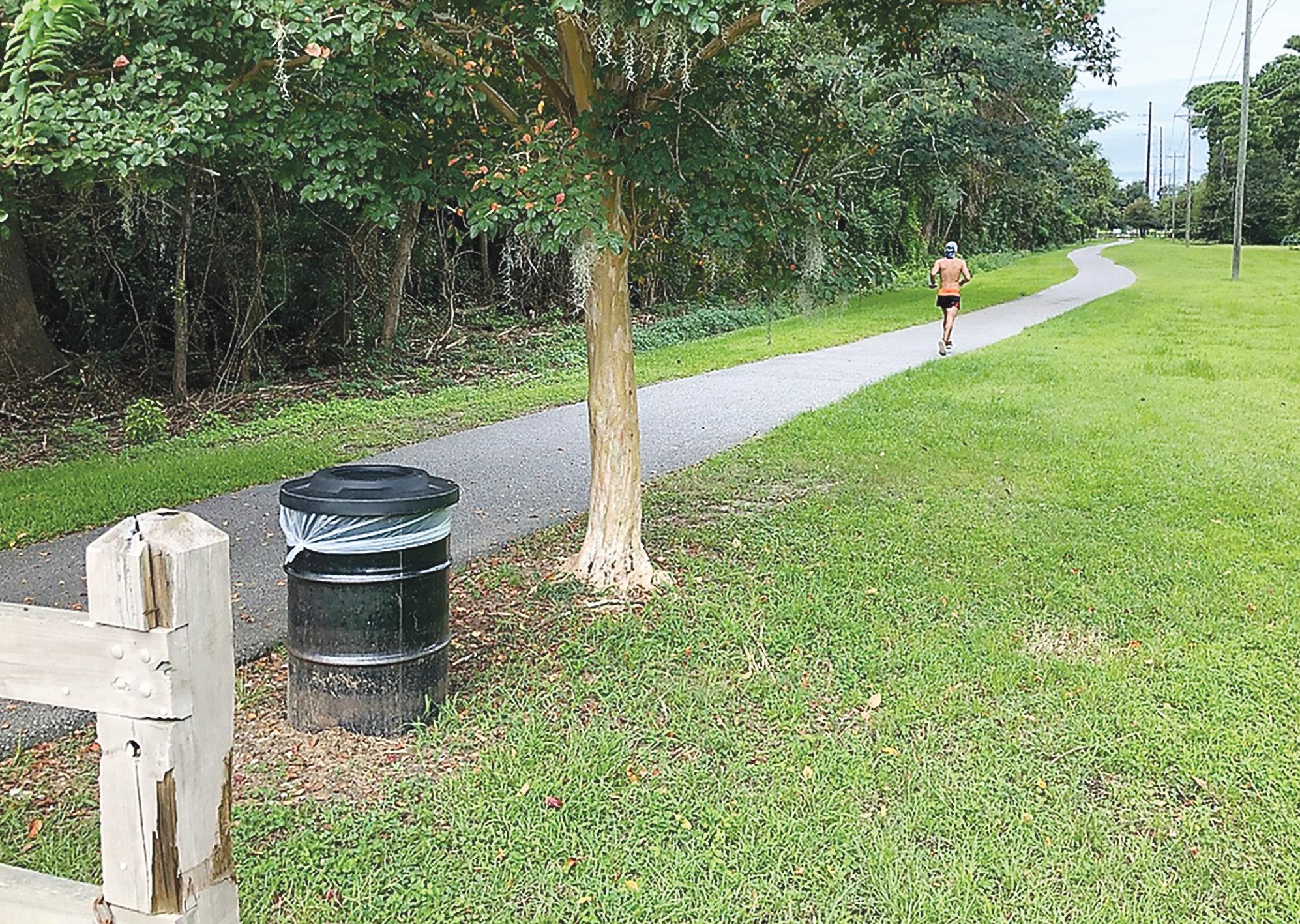
5 other popular, scenic runs to consider
Ravenel Bridge. What better to train for future Bridge Runs than to run 5 miles over and back across the Arthur Ravenel Jr. Bridge over the Cooper River.
Downtown Charleston.
Jogging through downtown’s streets when most people are asleep is a great way to greet the morning — and a way to see Charleston when there’s not much traffic.
Mount Pleasant’s Old Village. There’s always something neat to see in the Old Village — old trees, an unnoticed cemetery, beautiful houses — whenever you run through the shady streets of Mount Pleasant’s Old Village. Make sure to check out the Pitt Street Bridge and breathe in the salt air and pluff mud.
Sullivan’s Island. Just across the Intracoastal Waterway is Sullivan’s Island where you can get a great, long run on the beach. Go early and watch an amazing sunrise.
Daniel Island. Batten also suggests the trails around Daniel Island as the perfect place to train and stay out of the Lowcountry’s blistering summer sun.

